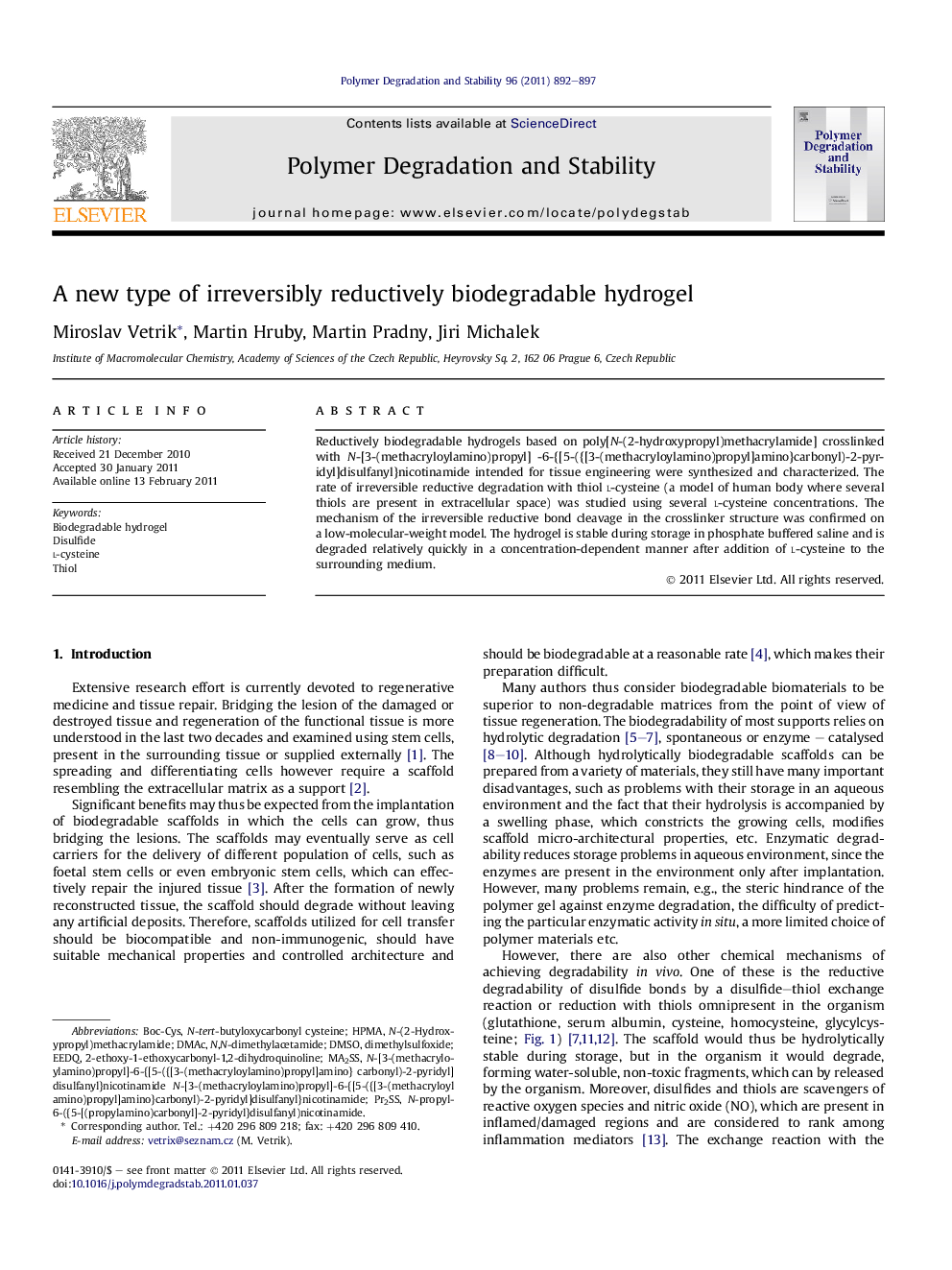| Article ID | Journal | Published Year | Pages | File Type |
|---|---|---|---|---|
| 5202696 | Polymer Degradation and Stability | 2011 | 6 Pages |
Abstract
Reductively biodegradable hydrogels based on poly[N-(2-hydroxypropyl)methacrylamide] crosslinked with N-[3-(methacryloylamino)propyl] -6-{[5-({[3-(methacryloylamino)propyl]amino}carbonyl)-2-pyridyl]disulfanyl}nicotinamide intended for tissue engineering were synthesized and characterized. The rate of irreversible reductive degradation with thiol l-cysteine (a model of human body where several thiols are present in extracellular space) was studied using several l-cysteine concentrations. The mechanism of the irreversible reductive bond cleavage in the crosslinker structure was confirmed on a low-molecular-weight model. The hydrogel is stable during storage in phosphate buffered saline and is degraded relatively quickly in a concentration-dependent manner after addition of l-cysteine to the surrounding medium.
Keywords
Related Topics
Physical Sciences and Engineering
Chemistry
Organic Chemistry
Authors
Miroslav Vetrik, Martin Hruby, Martin Pradny, Jiri Michalek,
